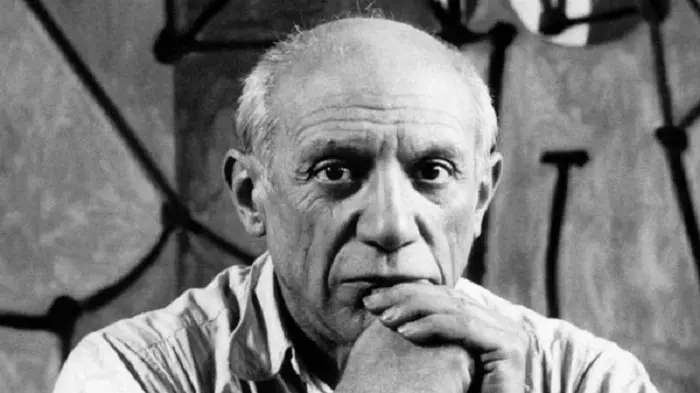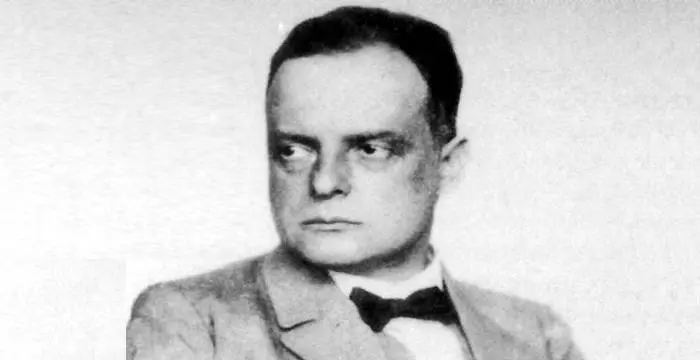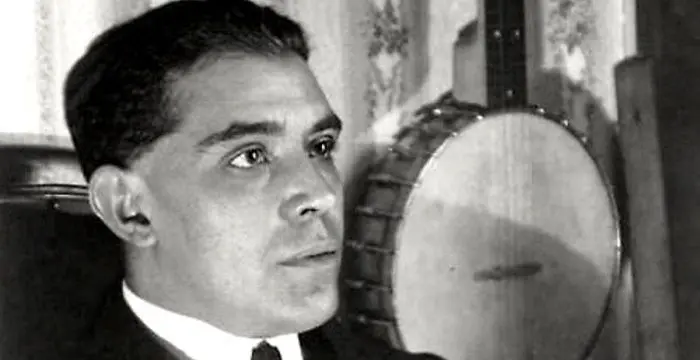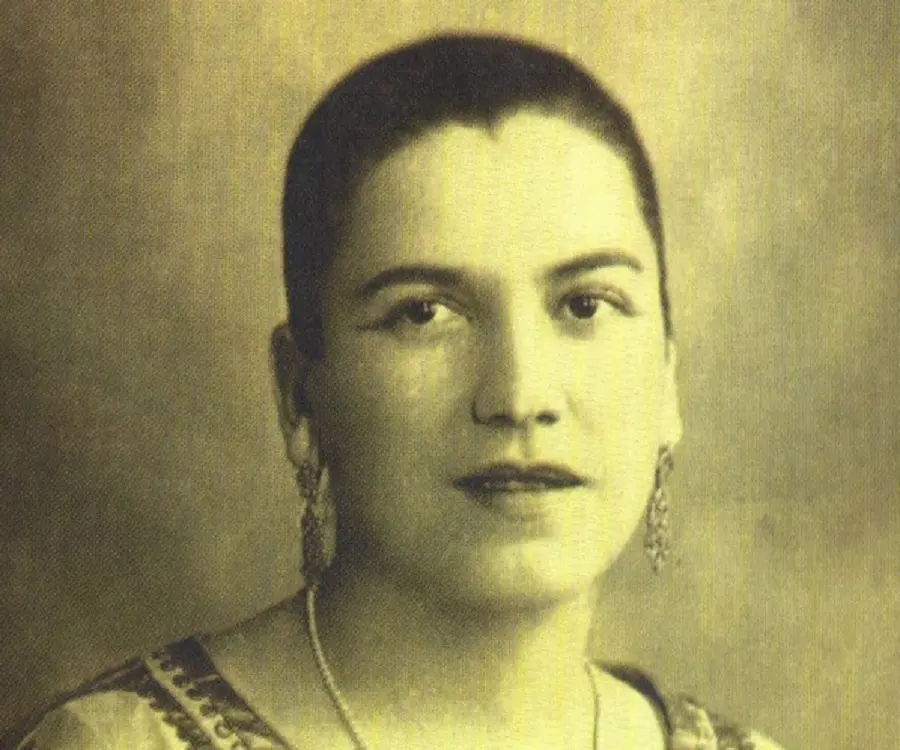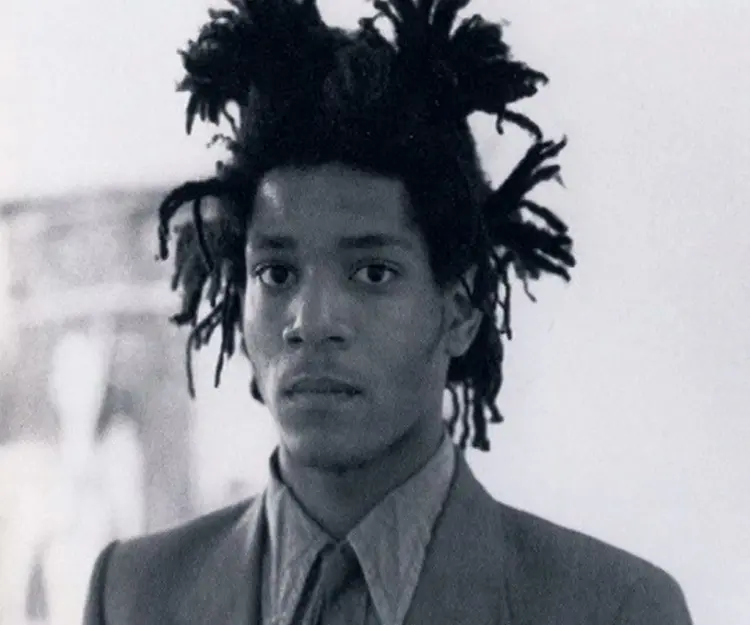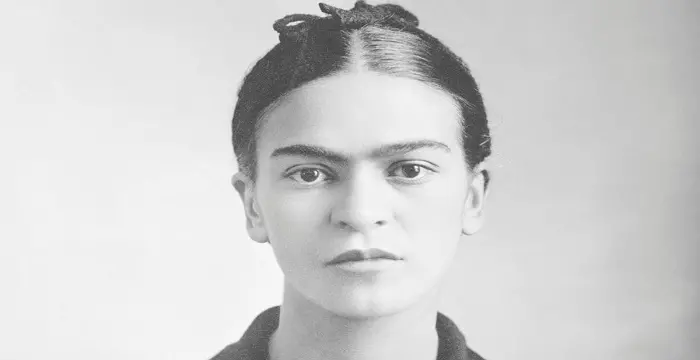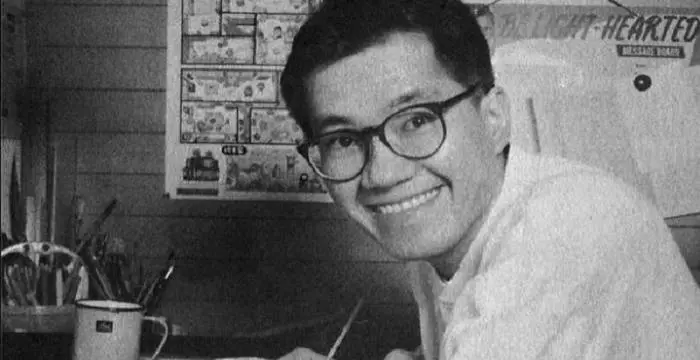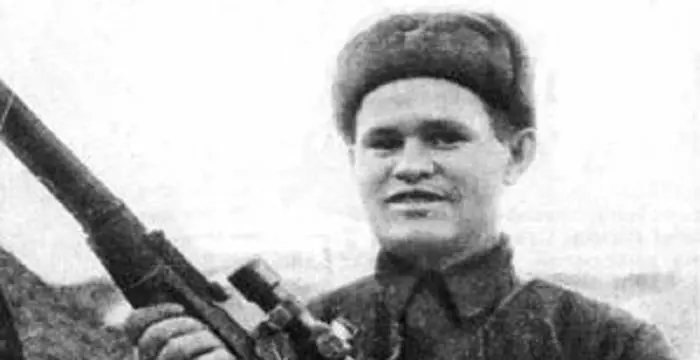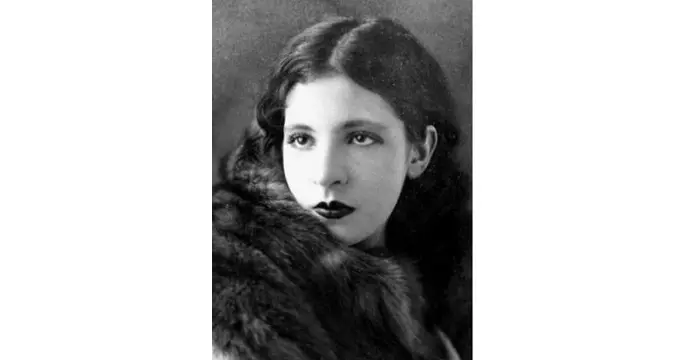
Tarsila do Amaral - Miscellaneous, Career and Family
Tarsila do Amaral's Personal Details
Tarsila do Amaral, better known to the world as Tarsila, was a Brazilian artist who gave Latin American art a new direction
| Information | Detail |
|---|---|
| Birthday | September 1, 1886 |
| Died on | January 17, 1973 |
| Nationality | Brazilian |
| Famous | Hispanic Painters, Artists, Cubist Painters, Miscellaneous |
| Spouses | André Teixeira Pinto (m. 1906–1913), Oswald de Andrade (m. 1926–1930) |
| Childrens | Dulce Pinto |
| Universities |
|
| Birth Place | Capivari, São Paulo, Brazil |
| Gender | Female |
| Father | José Estanislau do Amaral |
| Mother | Lydia Dias de Aguiar |
| Sun Sign | Virgo |
| Born in | Capivari, São Paulo, Brazil |
| Famous as | Artist |
| Died at Age | 86 |
// Famous Cubist Painters
Pablo Picasso
Pablo Picasso was one of the greatest painters of the 20th century. With this biography, explore his life, childhood, profile and timeline.
Paul Klee
Paul Klee was a Swiss-German painter counted among the greatest painters of the 20th century. This biography of Paul Klee provides detailed information about his childhood, life, achievements, works & timeline.
Juan Gris
Juan Gris was a renowned Spainish painter. Check out this biography to know about his childhood, life, achievements, works & timeline.
Tarsila do Amaral's photo
Who is Tarsila do Amaral?
Tarsila do Amaral, better known to the world as Tarsila, was a Brazilian artist who gave Latin American art a new direction. She was the strong woman who lived life on her own terms and conditions. Whether it was her work or her personal life — she always overcame limitations to follow her heart. Born in late nineteenth century into a planter family, she had her initial training in academic art. Later at the age of thirty she had her first exposure to modernist art through the works of Anita Malfatti. Three years later, she moved to Paris, where she was exposed to Cubism, Futurism, and Expressionism. Her experience in Paris also induced her to delve deeply into her Brazilian roots, igniting in her desire to be known as a Brazilian artist. On returning home, she started touring the countryside, rediscovering the vibrant colors of her land. Very soon she started portraying Brazilian landscape and imagery, synthesizing Brazilian elements with Cubism. Later she moved to surrealism. Her 1928 painting ‘Abaporu’ was instrumental in the formation of the Antropofagia Movement and was an inspiration behind Andrade's famous "Cannibal Manifesto". In later years she became socially more conscious, depicting social issues through her works.
// Famous Hispanic Painters
Jean-Michel Basquiat
Jean-Michel Basquiat was an American graffiti artist who was one of the leading lights of the neo expressionist era in the 1980s. Check out this biography to know about his childhood, life, achievements, works & timeline.
Pablo Picasso
Pablo Picasso was one of the greatest painters of the 20th century. With this biography, explore his life, childhood, profile and timeline.
Frida Kahlo
Frida Kahlo was a renowned Mexican artist, well known for her self-portraits. Read this biography to learn more about her childhood, life, works, achievements and timeline
Childhood & Early Years
Tarsila do Amaral was born on September 1, 1886, in Capivari, a small town in the Brazilian state of São Paulo. Her father, José Estanislau do Amaral, came from a family of prosperous landowners and grew coffee in his plantation. Her mother’s name was Lídia Dias de Aguiar.
Tarsila was born second of his parents’ five children, having an elder brother named Osvaldo Estanislau do Amaral and three younger siblings named Milton Estanislau do Amaral; Cecília do Amaral and José Estanislau do Amaral. Little is known about her family except that her parents must have been exceptionally forward.
At a time when daughters of rich families mostly stayed at home, learning little, she was supported by her parents in her endeavor to educate herself. However, it is not known if she was actually sent to school in São Paulo although some sources mention that she attended Zion School.
In 1900, the family moved to Barcelona, where she was enrolled in a school. It was at this school that she had her first formal instruction in art. Very soon, she impressed her teachers with her copies of images from the school’s collection.
In 1906, the family returned to São Paulo. By then, Tarsila was engrossed in her studies of art.
From 1916, she began exploring sculpture with Zadig and Montavani. Later from 1917, she started studying painting with Pedro Alexandrino.
Her interest in modernism was first ignited by a visit to Anita Malfatti’s solo exhibition ‘Exposição de Pintura Moderna’ in December 1917. Malfatti was the first Brazilian artist to introduce European and American Modernism to Brazil and her works, though criticized by most Brazilians, greatly affected young Tarsila.
Evolving Her Style
In 1920, Tarsila traveled to Paris, where she enrolled at Académie Julian, founded by painter and teacher Rodolphe Julian. Studying there until 1921, she returned home towards the beginning of 1922, just after the conclusion of Semana de Arte Moderna (Modern Art Week), held from February 11 to February 18.
While in Brazil, she met some of the organizers of ‘Semana de Arte Moderna’, especially Anita Malfatti, Oswald de Andrade, Mário de Andrade, and Menotti Del Picchia. Subsequently, she was invited to join the movement and together they formed ‘Grupo dos Cinco’ or the ‘Group of Five’.
The group’s main intention was to promote Brazilian culture through modern art, avoiding styles that were typically European. Instead, they tried to include elements indigenous to Brazil.
In December 1922, Tarsila returned to Paris, where she studied with André Lhote at Académie Lhote. In addition, she also studied briefly with Albert Gleizes and Fernand Léger. During this period, she was exposed to different types of modern art, such as Cubism, Futurism, and Expressionism.
She soon realized that although Cubism had its benefits, helping artists to come out of the academic art forms, finally it would prove destructive. Therefore, while she did not give up cubism she fought to evolve a style of her own, being influenced greatly by Fernand Léger (French painter, sculptor and filmmaker) in the process.
For inspiration, she now began to delve into Brazilian ethnic culture. In a letter to her parents during this period she had explained how her experiences in Paris had inspired her to explore her roots and her Brazilian heritage and how she wanted to be known as a Brazilian painter.
In 1923, she created her famous painting, ‘The Black Woman’ (A Negra). It was an exaggerated and flattened portrait of a nude Afro-Brazilian woman, set against a geometric background. It marked the beginning of her unique style, highlighting a synthesis of avant-garde aesthetics and Brazilian ethnicity.
Pau-Brasil Period
In December 1923, Tarsila returned to Brazil. Very soon she was joined by two poets, Oswald de Andrade, a Brazilian, and Blaise Cendrars, French. The three now began to tour Brazil, visiting Rio de Janeiro during its famous Carnival and small mining towns in Minas Gerais during Holy Week.
In Minas Gerais, she was delighted to rediscover the vibrant colors she loved as a child, but later was taught to reject as ‘ugly and unsophisticated’. Moreover, the rustic homes and old churches captured her imagination. Delving more deeply into her Brazilian heritage, slowly she began to discover her roots.
This period of her life is known as ‘Pau Brasil’ after a manifesto written by her companion and future husband Oswald de Andrade. In the manifesto, he urged artists to create works that were uniquely Brazilian and not imitate European styles.
During her travels, Tarsila made many sketches, which later became the basis of many of her paintings. The colors were always vibrant; something she rediscovered during this tour. She also developed an interest in industrialization and its impact on Brazilian society.
‘Estrada de Ferro Central do Brasil’ (E.F.C.B. 1924) was Tarsila’s first major work of this period. Created in vibrant colors, the cityscape was a wonderful synthesis of cubism and ethnic paintings. ‘Carnaval em Madureira’, also painted in 1924, is another of her major works.
Antropofagia Period
Clinging to her roots, Tarsila continued to portray Brazilian landscape as well as imagery through her paintings. In 1926, after marriage to Oswald de Andrade, they moved to Europe, holding her first exhibition at Galerie Percier, Paris, where her use of bold colors and tropical images was highly commended.
In Paris, Tarsila was exposed to surrealism. On her return to Brazil after a tour of Europe and Middle East, she embarked on a new period in her painting. Departing from her earlier style of portraying sceneries and cityscapes, she began to incorporate surrealism in her paintings.
By then, a new movement, depicting Brazil as a country of big snakes, had started in different parts of Brazil, especially São Paulo. The movement, based on earlier ‘Pau Brasil’ movement, aimed at appropriating European style and influences to create a unique Brazilian style.
In 1928, Tarsila created her most famous work, ‘Abaporu’. Depicting a man, the sun and a cactus, it inspired Andrade to write the Anthropophagite Manifesto, which gave rise to the Anthropophagic Movement.
‘Antropofagia’, created in 1929 was another of her major works of this period. Also in 1929, she had her first solo exhibition in Brazil, held at the Palace Hotel in Rio de Janeiro. Later in the same year, she had another solo exhibition at the Salon Gloria in São Paulo.
By 1930, she had become internationally famous and her works were being shown at exhibitions in New York and Paris. But this was also the year, when her marriage to Andrade broke up, ending a wonderful partnership that lasted for several years.
Later Career
In 1931, Tarsila travelled to Soviet Union, where she held an exhibition at the Museum of Occidental Art, Moscow. Later, she travelled throughout the USSR and was as much affected by the poverty she witnessed there as by the Socialist Realist paintings she saw.
In 1932, she returned to Brazil, socially more active, becoming involved in the Constitutionalist Revolution that broke out in July. Because of her visit to the Soviet Union, she was taken as a communist sympathizer and was imprisoned for a month.
For next two decades, her works continued to convey social issues, many of which featured recognizable human figures. ‘Second Class’ (1933), which depicts a working class family, is a well-known work of this period. Sometime now, she also began to write weekly column on art for Diario de São Paulo.
In 1938, Tarsila settled down permanently in São Paulo, painting Brazilian people and sceneries. In 1950s, she returned to her semi-cubic style, still depicting Brazilian landscape and imagery.
Major Works
Tarsila is best remembered for her 1928 oil painting on canvas, ’Abaporu’. Literally meaning ‘man eat people’, she created it as a birthday present for Oswald de Andrade. It inspired him to start Anthropophagic Movement that encouraged Brazilian artists to swallow European culture, turning it into something fully Brazilian. In 1995, ’Abaporu’ was auctioned at Christie's and was bought by Argentine collector Eduardo Costantini for $1.4 million. It is currently displayed at the Museo de Arte Latinoamericano de Buenos Aires, Argentina.
Personal Life & Legacy
In 1906, Tarsila married André Teixeira Pinto, who fathered her only child; a daughter named Dulce do Amaral Pinto, born in the same year. The couple did not have any common interest and was separated in around 1913 after seven years of living together.
In 1926, she married her long time companion Oswald de Andrade. They met in São Paulo in 1921. Very quickly, they formed an artistically productive partnership, traveling together both at home and abroad. In 1930, the marriage ended in a divorce.
After the divorce from Andrade, she might have formed a partnership with Osório Taumaturgo César. However, no detail is available about this union.
Next, she had a partnership with Luiz Martins, twenty years her junior. Although some biographers believe that he remained with her till her death, others believe that he left her for a younger woman.
Towards the end of her life, Tarsila suffered from severe back problems, which confined her to wheelchair. She died on January 17, 1976, at the age of 86, in São Paulo and was buried in Consolação Cemetery.
Other than 230 paintings and five sculptures, she had left hundreds of drawings, illustrations, prints and murals. More importantly, she led the Brazilian arts into modernism and helped to develop a unique style that was indigenously Brazilian.
The Amaral Crater on Mercury has been named after her.
// Famous Artists
Susan Mikula
Susan Mikula is an American artist and photographer. Check out this biography to know about her childhood, family life, achievements and fun factsabout her life.
Akira Toriyama
Akira Toriyama is a Japanese manga artist. This biography profiles his childhood, family, personal life, achievements, etc.
Bob Ross
Bob Ross was a celebrated, creative American painter and an art instructor. Check out this biography to know about his birthday, childhood, family life, achievements and fun facts about him.
Tarsila do Amaral biography timelines
- // 1st Sep 1886Tarsila do Amaral was born on September 1, 1886, in Capivari, a small town in the Brazilian state of São Paulo. Her father, José Estanislau do Amaral, came from a family of prosperous landowners and grew coffee in his plantation. Her mother’s name was Lídia Dias de Aguiar.
- // 1900In 1900, the family moved to Barcelona, where she was enrolled in a school. It was at this school that she had her first formal instruction in art. Very soon, she impressed her teachers with her copies of images from the school’s collection.
- // 1906In 1906, the family returned to São Paulo. By then, Tarsila was engrossed in her studies of art.
- // 1906 To 1913In 1906, Tarsila married André Teixeira Pinto, who fathered her only child; a daughter named Dulce do Amaral Pinto, born in the same year. The couple did not have any common interest and was separated in around 1913 after seven years of living together.
- // 1916 To 1917From 1916, she began exploring sculpture with Zadig and Montavani. Later from 1917, she started studying painting with Pedro Alexandrino.
- // Dec 1917Her interest in modernism was first ignited by a visit to Anita Malfatti’s solo exhibition ‘Exposição de Pintura Moderna’ in December 1917. Malfatti was the first Brazilian artist to introduce European and American Modernism to Brazil and her works, though criticized by most Brazilians, greatly affected young Tarsila.
- // Dec 1922In December 1922, Tarsila returned to Paris, where she studied with André Lhote at Académie Lhote. In addition, she also studied briefly with Albert Gleizes and Fernand Léger. During this period, she was exposed to different types of modern art, such as Cubism, Futurism, and Expressionism.
- // 1923In 1923, she created her famous painting, ‘The Black Woman’ (A Negra). It was an exaggerated and flattened portrait of a nude Afro-Brazilian woman, set against a geometric background. It marked the beginning of her unique style, highlighting a synthesis of avant-garde aesthetics and Brazilian ethnicity.
- // Dec 1923In December 1923, Tarsila returned to Brazil. Very soon she was joined by two poets, Oswald de Andrade, a Brazilian, and Blaise Cendrars, French. The three now began to tour Brazil, visiting Rio de Janeiro during its famous Carnival and small mining towns in Minas Gerais during Holy Week.
- // 1924‘Estrada de Ferro Central do Brasil’ (E.F.C.B. 1924) was Tarsila’s first major work of this period. Created in vibrant colors, the cityscape was a wonderful synthesis of cubism and ethnic paintings. ‘Carnaval em Madureira’, also painted in 1924, is another of her major works.
- // 1926Clinging to her roots, Tarsila continued to portray Brazilian landscape as well as imagery through her paintings. In 1926, after marriage to Oswald de Andrade, they moved to Europe, holding her first exhibition at Galerie Percier, Paris, where her use of bold colors and tropical images was highly commended.
- // 1928In 1928, Tarsila created her most famous work, ‘Abaporu’. Depicting a man, the sun and a cactus, it inspired Andrade to write the Anthropophagite Manifesto, which gave rise to the Anthropophagic Movement.
- // 1928 To 1995Tarsila is best remembered for her 1928 oil painting on canvas, ’Abaporu’. Literally meaning ‘man eat people’, she created it as a birthday present for Oswald de Andrade. It inspired him to start Anthropophagic Movement that encouraged Brazilian artists to swallow European culture, turning it into something fully Brazilian. In 1995, ’Abaporu’ was auctioned at Christie's and was bought by Argentine collector Eduardo Costantini for $1.4 million. It is currently displayed at the Museo de Arte Latinoamericano de Buenos Aires, Argentina.
- // 1929‘Antropofagia’, created in 1929 was another of her major works of this period. Also in 1929, she had her first solo exhibition in Brazil, held at the Palace Hotel in Rio de Janeiro. Later in the same year, she had another solo exhibition at the Salon Gloria in São Paulo.
- // 1930By 1930, she had become internationally famous and her works were being shown at exhibitions in New York and Paris. But this was also the year, when her marriage to Andrade broke up, ending a wonderful partnership that lasted for several years.
- // 1931In 1931, Tarsila travelled to Soviet Union, where she held an exhibition at the Museum of Occidental Art, Moscow. Later, she travelled throughout the USSR and was as much affected by the poverty she witnessed there as by the Socialist Realist paintings she saw.
- // 1932In 1932, she returned to Brazil, socially more active, becoming involved in the Constitutionalist Revolution that broke out in July. Because of her visit to the Soviet Union, she was taken as a communist sympathizer and was imprisoned for a month.
- // 1933For next two decades, her works continued to convey social issues, many of which featured recognizable human figures. ‘Second Class’ (1933), which depicts a working class family, is a well-known work of this period. Sometime now, she also began to write weekly column on art for Diario de São Paulo.
- // 1938In 1938, Tarsila settled down permanently in São Paulo, painting Brazilian people and sceneries. In 1950s, she returned to her semi-cubic style, still depicting Brazilian landscape and imagery.
- // 17th Jan 1976Towards the end of her life, Tarsila suffered from severe back problems, which confined her to wheelchair. She died on January 17, 1976, at the age of 86, in São Paulo and was buried in Consolação Cemetery.
// Famous Miscellaneous
Jason Simpson
Jason Simpson is the son of former NFL running back, broadcaster and actor O. J. Simpson. Check out this biography to know about his childhood, family, life, and little known facts about him.
Melissa Brim
Melissa Brim is the ex-girlfriend of former professional boxer Floyd Mayweather Jr. Check out this biography to know about her birthday, childhood, family life, achievements and fun facts about her.
Joyce Meyer
Joyce Meyer is a Christian author and speaker. This biography provides detailed information about her childhood, life, achievements, works & timeline
Galina Becker
Galina Becker is a former athlete and fitness model from America. Check out this biography to know about her birthday, childhood, family life, achievements and fun facts about her.
Jacelyn Reeves
Jacelyn Reeves is a former flight attendant who once had a fling with Clint Eastwood. Check out this biography to know about her birthday, childhood, family life, achievements and fun facts about her.
Vasily Zaytsev
Vasily Zatysev was a Russian sniper who served during the World War II. Check out this biography to know about his childhood, family life, achievements and fun facts about him.
Tarsila do Amaral's FAQ
What is Tarsila do Amaral birthday?
Tarsila do Amaral was born at 1886-09-01
When was Tarsila do Amaral died?
Tarsila do Amaral was died at 1973-01-17
Where was Tarsila do Amaral died?
Tarsila do Amaral was died in São Paulo
Which age was Tarsila do Amaral died?
Tarsila do Amaral was died at age 86
Where is Tarsila do Amaral's birth place?
Tarsila do Amaral was born in Capivari, São Paulo, Brazil
What is Tarsila do Amaral nationalities?
Tarsila do Amaral's nationalities is Brazilian
Who is Tarsila do Amaral spouses?
Tarsila do Amaral's spouses is André Teixeira Pinto (m. 1906–1913), Oswald de Andrade (m. 1926–1930)
Who is Tarsila do Amaral childrens?
Tarsila do Amaral's childrens is Dulce Pinto
What was Tarsila do Amaral universities?
Tarsila do Amaral studied at Académie Julian
Who is Tarsila do Amaral's father?
Tarsila do Amaral's father is José Estanislau do Amaral
Who is Tarsila do Amaral's mother?
Tarsila do Amaral's mother is Lydia Dias de Aguiar
What is Tarsila do Amaral's sun sign?
Tarsila do Amaral is Virgo
How famous is Tarsila do Amaral?
Tarsila do Amaral is famouse as Artist
